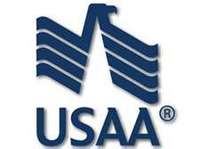SAN ANTONIO--April 24, 2012: America's military troops who are surviving the hazards of foreign battlefields are returning only to face new risks on domestic roadways, according to a just-released study by USAA, a leading financial services and insurance provider for military families.
“Our men and women in uniform put their lives on the line when they deploy in service of this country, but they can face new threats to their safety when they come home and get behind the wheel”
According to USAA's "Returning Warriors" study, troops coming back from deployment had 13 percent more at-fault accidents within the first six months of returning when compared to the six months prior to deployment. Enlisted ranks were more prone to such accidents than officers, and those in the Army and Marines had much higher crash rates than those in the Navy or Air Force.
"Returning Warriors" study highlights
- Enlisted personnel (E1-E4) had 22 percent more at-fault accidents, noncommissioned officers (E5-E9) 10 percent more and officers 3.5 percent more.
- Losing control of the vehicle was the most common cause of at-fault accidents.
- "Objects in the road" as the reported cause of accidents increased dramatically -- more than any other cause.
- Younger (under 22) drivers' crash rates were more than three times the crash rates for older drivers.
- Multiple deployments led to higher crash rates, and individuals with longer deployments were generally more likely to be involved in at-fault accidents.
"Our men and women in uniform put their lives on the line when they deploy in service of this country, but they can face new threats to their safety when they come home and get behind the wheel," said retired U.S. Army Maj. Gen. Kevin Bergner, president of USAA Property and Casualty Insurance Group. "We care deeply about all of our returning warriors and we want to do what we can to keep them safe. We've made it our mission to serve the military community since 1922, so we hope this study can help shine a light on this challenge and bring people together so we can understand the risks returning warriors face and work toward solutions."
USAA conducted a study focusing on private passenger vehicle driving experiences of USAA-member military personnel over a three-year period, which included 171,000 deployments to various overseas locations.
"Like other traffic safety issues that require behavioral changes, there are no easy solutions with this one," Bergner said. "One thing we can all do is encourage a dialogue about it. Knowing the military as well as we do, USAA is uniquely positioned to help draw attention to this challenge and join with others to see what can be done to address it."
USAA has shared its research with each military branch's safety centers. USAA has also shared the study with academics and traffic safety experts and has taken steps to make USAA members aware of the behind-the-wheel risks for returning troops.
Professor Erica Stern of the University of Minnesota has also studied the driving experiences of returning soldiers and has found "carryover" driving behaviors that may help explain some of this increase. Troops' driving maneuvers were useful in deployment but may add risk on American roadways. For example, soldiers commonly describe driving at inappropriate speeds and reluctance to stop at intersections.
Driving behaviors potentially carried home from deployment
- Reluctance to stop at intersections.
- Driving at inappropriate speeds (too fast or too slow).
- Changing lanes while traveling under bridges.
- Reluctance to use seat belts.
- Driving in the center of roads.
Source: Erica Stern, PhD, OTR/L
"Depending on their military assignment and time of deployment, troops may have driven slowly to be vigilant for explosives or attacks, or they may have driven very quickly to reduce their time at risk in transit. When they come home, they report problems speeding or being unable to drive on highways comfortably. Soldiers also had to keep their convoy intact, and therefore did not yield to people or traffic," Professor Stern said. "These are potentially lifesaving habits during deployment but may put them in harm's way when soldiers bring them home."
About USAA
USAA provides insurance, banking, investment and retirement products and services to 9 million members of the U.S. military and their families. Known for its legendary commitment to its members, USAA is consistently recognized for outstanding service, employee well-being and financial strength. USAA membership is open to all who are serving or have honorably served our nation in the U.S. military -- and their eligible family members. For more information about USAA, or to learn more about membership, visit USAA.
Report Summary: A report summary can be found at USAA.



